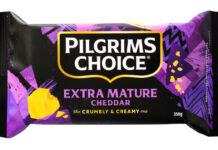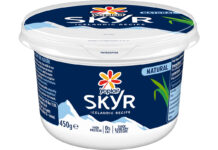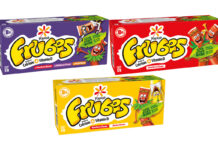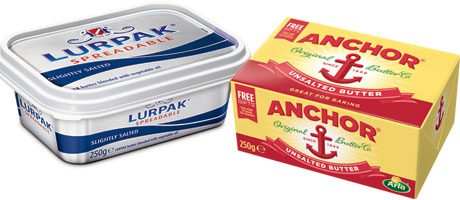
THE backlash against artificial foods has been great news for butter in all its formats.
Dairy giant, Arla Foods, reckons that butter’s natural credentials put it in a strong position to capitalise on the move away from margarine.
“Last year, ’healthy spreads’ came under fire by the national press, questioning the health credentials behind these type of products,” said Stuart Ibberson, business unit director at Arla Foods.
“In turn, this has boosted the profile of natural, good quality butters and spreads. Calorie counting is increasingly becoming out-dated as consumers prioritise taste, health and naturalness. Block butters and spreadables have become increasingly popular due to their natural characteristics.”
Ibberson recommends retailers make the most of this by stocking a strong BSM range, including a variety of pack sizes to meet the needs of consumers on different shopper missions.
“Over half of shoppers on a top-up mission will be walking to the store to grab ingredients for dinner, so retailers should ensure they stock a good selection of smaller pack sizes such as 250g.”
Must-stocks, he argued, include the best-selling lines according to Kantar research, including Lurpak spreadable in 250g and 500g, Anchor Salted and Country Life 250g blocks and Utterly Butterly and Clover 500g spreads.
• Sandwiches continue to drive the sales of butters, spreads and margarines, according to Unilever’s Partners for Growth controller and convenience manager, Tom Hazelden. The most popular lunch option is the sandwich – eaten three times more frequently than soup, the next most-eaten lunch according to Kantar, he said.
“Clearly this presents opportunities for growth for the category as 44% of spreads usage is in sandwiches, with 35% opting to use butter.”
Home baking is another area that continues to grow. “The economic downturn has also driven a return to home-made foods,” Hazelden said.
“The fastest areas of growth in homemade baking are cupcakes, birthday cakes and brownies. Convenience retailers should ensure they can capitalise on this by stocking baking spreads, but also prompting impulse baking sessions with signage at the spreads fixture and displaying items such as cake decorations.”
Unilever NPD includes two new hybrid spreads (see panel below)and Stork gets a new look for its block and tub, which flags up its home-baking uses.
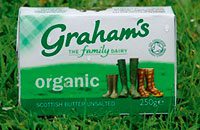 • Graham’s says its block butter has become the fastest-selling brand in Scotland according to Kantar figures. It has doubled its volume share of the block butter market from 4.7% to 10.2%, while value has increased from 5.1% to 9.3%. Butter now accounts for 11% of all Graham’s sales.
• Graham’s says its block butter has become the fastest-selling brand in Scotland according to Kantar figures. It has doubled its volume share of the block butter market from 4.7% to 10.2%, while value has increased from 5.1% to 9.3%. Butter now accounts for 11% of all Graham’s sales.
Carol Graham, marketing director, said: “Our family has been in the dairy industry for three generations and our milk has long been considered a household staple by our customers. These results show that Graham’s butter is now increasingly gaining market share as consumers seek out a Scottish butter that’s traditionally churned and tastes great.”




